What Makes Yancheng Site a Hidden Gem in Changzhou?
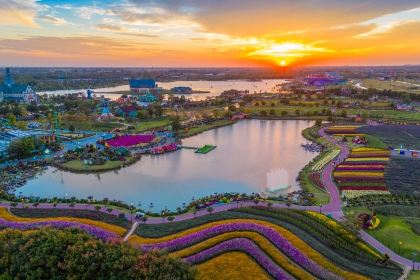
An Essential Guide to Visiting Yancheng Site
Nestled in the heart of Changzhou, the Yancheng Site (淹城遗址) presents a mesmerizing glimpse into the rich tapestry of ancient Chinese civilization. What sets this site apart is its well-preserved Yangtze Delta-style water village, a serene masterpiece that captures the essence of traditional Chinese life harmoniously intertwined with nature. Visitors are invited to wander among lush greenery, ancient ruins, and tranquil waterways, creating a unique blend of history and natural beauty that is rarely found in urban settings.
In this essential guide, we will delve into the must-see attractions at Yancheng Site, explore practical tips for making the most of your visit, and offer insights into the cultural significance of this remarkable location. Whether you are a history enthusiast eager to uncover the stories of the past or a nature lover seeking a peaceful retreat, Yancheng Site promises an enriching experience that caters to a diverse range of interests. Join us on a journey through time and tranquility as we uncover the treasures of this extraordinary site.
In This Guide
- An Essential Guide to Visiting Yancheng Site
- The Rich History and Legends of Yancheng Site
- Main Highlights: What You Absolutely Can’t Miss
- Planning Your Visit: A Practical Guide
- Tickets: Prices, Booking, and Tips
- How to Get There: A Complete Transportation Guide
- Local Cuisine and Accommodation Nearby
- Frequently Asked Questions
- Final Thoughts on Your Trip
The Rich History and Legends of Yancheng Site
A Glimpse into the Past: The Yancheng Site
Nestled in the lush landscapes of Changzhou, the Yancheng Site (淹城遗址) is a treasure trove of ancient history that dates back over 2,500 years. This remarkable archaeological site invites visitors to explore the remnants of a once-thriving Yangtze Delta water village, a significant center of culture and trade during various dynastic periods.
The Origins of Yancheng
Yancheng’s history can be traced to the Spring and Autumn period (770-476 BCE), a time when it served as a vital settlement for the Wu State. The strategic location of Yancheng, situated near rivers and fertile lands, made it an essential hub for commerce and agriculture. The site is particularly known for its well-preserved city walls and moat, showcasing the advanced engineering skills of ancient Chinese civilization.
Dynastic Changes and Cultural Flourishing
As centuries progressed, Yancheng witnessed the rise and fall of dynasties, each leaving its mark on the site. During the Warring States period, the city expanded significantly, becoming a bustling urban center. The Qin (221-206 BCE) and Han (206 BCE-220 CE) dynasties further developed the area, fostering trade and cultural exchange. Artifacts unearthed from the site, including pottery, tools, and inscriptions, offer a vivid glimpse into the daily life and customs of its inhabitants.
Legends and Myths
Yancheng is steeped in fascinating legends that embellish its historical significance. One such story revolves around the mystical “Yancheng Dragon,” believed to have guarded the city’s prosperity. According to local lore, this dragon would appear during times of drought, summoning rain and ensuring bountiful harvests. Such tales not only reflect the deep-rooted reverence for nature but also illustrate the cultural beliefs that shaped the community.
Another captivating legend tells of a skilled artisan renowned for creating exquisite pottery. His works were said to be imbued with the essence of the land, capturing the beauty of the Yangtze Delta. It is believed that his craftsmanship attracted traders from far and wide, further enhancing Yancheng’s status as a commercial hub.
The Modern Era and Preservation Efforts
In more recent history, the Yancheng Site has become a focal point for archaeological research and cultural preservation. Efforts have been made to restore and showcase the remnants of this ancient water village. The site now features a serene park surrounded by lush greenery, allowing visitors to immerse themselves in the tranquil atmosphere while reflecting on the profound history that unfolded here.
As you wander through the site, you can appreciate the interplay between nature and heritage. The remnants of the ancient walls, the gentle flow of the waterway, and the surrounding flora create a peaceful environment that invites contemplation and exploration.
Conclusion
The Yancheng Site stands as a testament to the rich tapestry of Chinese history, weaving together tales of dynasties, legends, and cultural achievements. For international travelers seeking an authentic glimpse into ancient China, a visit to this remarkable site offers not just a journey through time but also a chance to connect with the legends that continue to resonate within the fabric of the community.
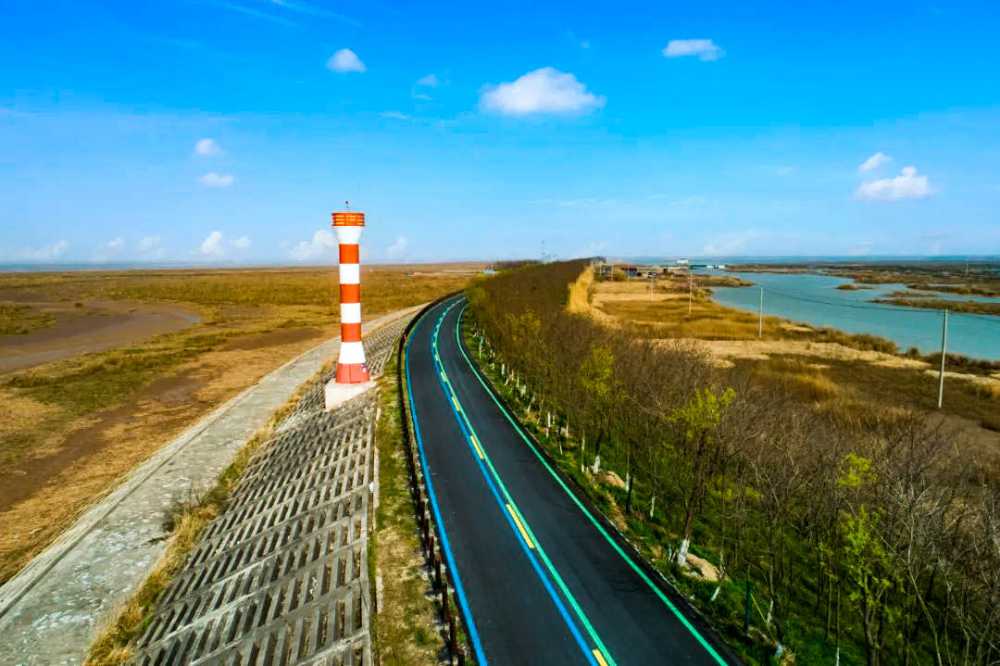
Yancheng Site.
Main Highlights: What You Absolutely Can’t Miss
Discover the Ancient Ruins
The heart of the Yancheng Site lies within its fascinating ancient ruins, remnants of a once-thriving Yangtze Delta water village. Here, you can wander through the vestiges of history, imagining the lives of those who walked these paths centuries ago. The ruins are well-preserved, offering insight into the architectural styles and community layouts of ancient Chinese society. Don’t forget your camera; the juxtaposition of ancient stones against the vibrant greenery is a sight to behold!
Stroll Through the Water Village
As you meander through the reconstructed water village, you’ll be transported back in time. The charming canals and traditional wooden structures create an idyllic setting that reflects the rich culture of the region. Take a moment to relax by the water’s edge, breathe in the fresh air, and listen to the gentle lapping of the water. For a more immersive experience, consider taking a boat ride to view the village from a different angle. Just be sure to check the schedule and availability, as conditions can vary.
Enjoy the Lush Greenery of the Park
The surrounding park is a serene escape from the hustle and bustle of city life. With its expansive lawns, flowering trees, and manicured gardens, this green oasis provides a perfect backdrop for leisurely strolls or quiet picnics. Bring a book, enjoy a snack, or simply take in the peaceful atmosphere. Weekdays are ideal for a visit, as weekends can draw larger crowds, diminishing your tranquility.
Explore the Statues and Philosophical Gardens
Within the site, you’ll encounter a series of striking statues that pay homage to various philosophical schools of thought. These sculptures are not only visually impressive but also serve as educational landmarks, offering insight into the beliefs that shaped Chinese culture. Take your time to ponder the meanings behind each statue, and if you’re curious, consider hiring a local guide to deepen your understanding of the historical context.
Visit the Amusement Park Area
For travelers seeking a bit of fun, the amusement park section of Yancheng Site offers a variety of attractions. While some rides require additional fees, they can be a delightful way to break up your historical explorations with a bit of excitement. However, keep in mind that some attractions may close seasonally, so check in advance to avoid disappointment.
Participate in Cultural Events
Depending on the time of your visit, you may have the opportunity to participate in cultural events or festivals held at the Yancheng Site. These events often showcase traditional performances, crafts, and culinary delights, providing an authentic glimpse into local customs. Be sure to check the site’s calendar ahead of your visit to catch any special happenings.
Tips for a Memorable Visit
To make the most of your trip to Yancheng Site, consider visiting during off-peak hours, preferably on a weekday, to avoid crowds. Ensure you check for any closures or restrictions before your arrival, especially if you have specific attractions in mind. For a richer experience, hiring a local guide can enhance your understanding of the cultural and historical significance of the site, making your visit truly unforgettable.
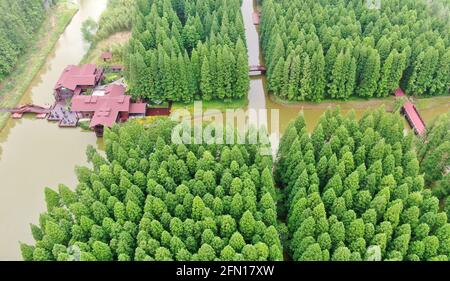
Yancheng Site.
Planning Your Visit: A Practical Guide
Best Time to Visit
The ideal time to visit the Yancheng Site is during spring (March to May) and autumn (September to November). During these months, you can enjoy mild temperatures and pleasant weather, making your exploration of the ancient ruins and water village more enjoyable. Summer can be hot and humid, while winter may bring cold temperatures that could limit your outdoor activities.
Recommended Itinerary
For a fulfilling experience at the Yancheng Site, consider the following itinerary:
Morning:
– 9:00 AM: Arrive at the Yancheng Site to avoid the afternoon crowds. Begin your visit at the entrance, where you’ll find informative displays about the site’s historical significance.
– 10:00 AM: Explore the ancient ruins area, taking your time to appreciate the architecture and scenic surroundings.
Lunch:
– 12:00 PM: Enjoy lunch at one of the nearby restaurants or cafés within the park. Local Chinese cuisine can be a delightful treat.
Afternoon:
– 1:30 PM: Take a leisurely stroll through the Yangtze Delta-style water village. Capture the picturesque scenery and vibrant greenery.
– 2:30 PM: Consider a boat ride for a unique perspective of the site, but check for availability and language options for guided tours.
– 4:00 PM: Visit the amusement area if you’re interested in family-friendly attractions.
Evening:
– 5:00 PM: Wrap up your visit and head to a local restaurant to savor more of Changzhou’s culinary offerings.
Photography Tips
- Golden Hour: The best lighting for photography occurs during the golden hour—shortly after sunrise and just before sunset. This will give your photos a warm glow, enhancing the beauty of the ancient ruins and lush landscapes.
- Wide-Angle Lens: If you have a DSLR or mirrorless camera, a wide-angle lens will help capture the expansive views of the park and its architecture.
- Details Matter: Don’t forget to zoom in on intricate details, such as carvings and statues, that reflect the cultural significance of the site.
- Respectful Capturing: Be mindful of other visitors and avoid blocking pathways while taking photos. Also, respect any signage regarding photography restrictions, especially in sacred areas.
What to Wear
- Comfortable Footwear: As you’ll be walking for extended periods, opt for sturdy and comfortable shoes that are suitable for both walking and standing.
- Weather-Appropriate Clothing: Dress in layers if you’re visiting in spring or autumn, as temperatures can fluctuate. In summer, lightweight, breathable fabrics are ideal, while winter visitors should be prepared with warm clothes.
- Sun Protection: Don’t forget sunglasses, a hat, and sunscreen if you’re visiting during the warmer months, as the park has limited shaded areas.
Insider Tips
-
Weekday Visits: To experience the Yancheng Site in a more serene atmosphere, plan your visit during weekdays. Weekends can be quite crowded, which may detract from your experience.
-
Local Guides: Hiring a local guide can significantly enhance your understanding of the site’s history and cultural significance. They can provide insights that you might not find in guidebooks.
-
Check for Events: Occasionally, the site hosts cultural performances and festivals. Check the official website or local listings to see if any events coincide with your visit.
-
Stay Hydrated: Carry a water bottle, especially in warmer months, as you’ll be walking a lot. There are areas to refill, but having your own supply is convenient.
-
Explore Nearby Attractions: If time allows, consider visiting other attractions in Changzhou, such as the Wujin Museum or Tianning Temple, to enrich your travel experience.
By following this practical guide, your visit to the Yancheng Site will not only be enjoyable but also deeply enriching, allowing you to connect with the historical essence of this remarkable location.
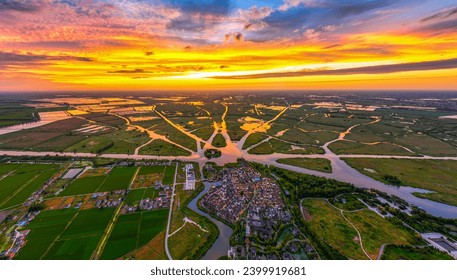
Yancheng Site.
Tickets: Prices, Booking, and Tips
Visiting the Yancheng Site in Changzhou offers a unique glimpse into ancient Chinese culture, and understanding the ticketing details can enhance your experience. Below is a comprehensive overview of ticket types, prices, and what to expect when you book your visit.
| Ticket Type | Price (CNY) | Includes |
|---|---|---|
| Standard Adult Ticket | 190 | Access to the site and basic exhibits |
| Adult Ticket with Boat Ride | 220 | Access to the site, basic exhibits, and a scenic boat ride |
| Children (under 1.2m) | 50 | Access to the site only |
| Seniors (over 60) | 90 | Access to the site |
Booking Information
To ensure a seamless experience, it is highly recommended to book your tickets in advance. Here’s how you can do it:
-
Online Booking: Tickets can be purchased through various travel websites and apps like Trip.com or directly from the Yancheng Site’s official website. Booking online often allows you to secure better prices and avoid long queues on the day of your visit.
-
On-Site Booking: If you prefer to buy tickets in person, they are available at the site’s entrance. However, be aware that weekends and public holidays can see higher visitor numbers, which may lead to longer wait times.
-
Consider a Guided Tour: Hiring a local guide can significantly enrich your visit. They offer valuable insights into the historical significance of the site, making your experience more engaging.
Tips for a Great Visit
- Weekday Visits: To avoid crowds, consider visiting on a weekday. The site tends to be quieter, allowing for a more relaxed exploration.
- Check for Closures: Before your visit, check the official website or local listings for any potential closures or restrictions on specific attractions within the site.
- Bring Cash: While many places accept cards, it’s wise to have some cash on hand for small purchases or local vendors.
With these details in hand, you’re well-prepared to immerse yourself in the historical charm of the Yancheng Site. Enjoy your journey through time!
How to Get There: A Complete Transportation Guide
From the Nearest Major City
Traveling from Shanghai
The Yancheng Site is approximately 180 kilometers west of Shanghai, making it an accessible day trip or weekend getaway. Here are your options for reaching the site:
-
By Train: High-speed trains from Shanghai Hongqiao Railway Station to Changzhou Railway Station take about 1.5 to 2 hours. Tickets typically range from ¥80 to ¥150 (approximately $12 to $22 USD) depending on the class and time of booking. Once at Changzhou Railway Station, you can take a taxi to the Yancheng Site, which is about 30 minutes away (approximately ¥70-100 or $10-15 USD).
-
By Bus: Long-distance buses depart regularly from Shanghai’s various bus terminals to Changzhou, taking about 3 to 4 hours. The fare ranges from ¥70 to ¥100 ($10 to $15 USD). Upon arrival, taxis are available for a short ride to the site.
-
By Car: If you prefer to drive, you can rent a car and take the G42 Expressway, which takes around 2.5 hours depending on traffic. Keep in mind that tolls will apply, costing approximately ¥100 ($15 USD) one way.
Traveling from Nanjing
Nanjing is another major city within reach, located about 120 kilometers from the Yancheng Site.
-
By Train: High-speed trains from Nanjing to Changzhou take about 40-60 minutes, with fares ranging from ¥40 to ¥80 ($6 to $12 USD). From Changzhou Railway Station, a taxi will get you to Yancheng Site in about 30 minutes for approximately ¥70-100 ($10-15 USD).
-
By Bus: Regular buses operate between Nanjing and Changzhou, with a travel time of about 2 hours and fares around ¥30-50 ($5-8 USD). Taxis are available for the final leg to the site.
-
By Car: Driving from Nanjing via the G25 Expressway will take around 1.5 hours. Expect similar toll costs as mentioned above.
Getting Around the Scenic Area
Once you arrive at the Yancheng Site, navigating the area can be enjoyable and straightforward.
-
Walking: The site is expansive, featuring beautiful park landscapes and well-marked pathways. Walking is the best way to soak in the surroundings, with plenty of shaded spots and scenic views. Be sure to wear comfortable shoes!
-
Bicycle Rentals: For a quicker way to explore, consider renting a bike. There are rental stations available at the entrance of the site, and cycling allows you to cover more ground while enjoying the fresh air. Rates generally start at ¥20 ($3 USD) per hour.
-
Guided Tours: If you’re looking for a more in-depth experience, hiring a local guide can enhance your visit. Some tour companies offer packages that include transportation and guided walks through the historical areas, providing context and enriching your understanding of the site’s significance.
-
Electric Carts: There may be electric carts available for hire at certain points within the site, especially for visitors who prefer not to walk long distances or have mobility challenges. Check at the visitor center for availability and rates.
Tips for a Smooth Journey
- Plan Your Visit: Weekdays are best for avoiding crowds, while weekends can be bustling. Check ahead for any potential closures or restrictions on attractions.
- Language: While some signage is in English, having a translation app on hand can be beneficial for navigating and understanding local information.
- Cash and Payment: While many places accept mobile payments, it’s a good idea to carry some cash (renminbi) for smaller vendors and transportation.
With these tips and transportation options, visiting the Yancheng Site can be a seamless and rewarding experience. Enjoy your journey through China’s rich history!
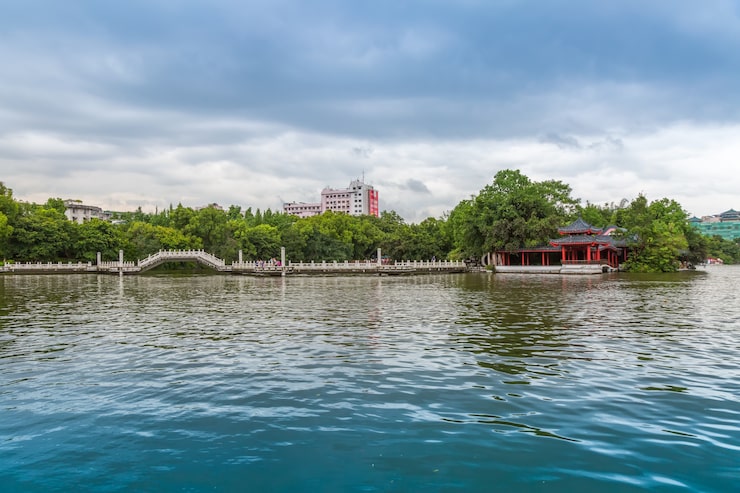
Yancheng Site.
Local Cuisine and Accommodation Nearby
When visiting the Yancheng Site in Changzhou, not only can you immerse yourself in the rich history of the Yangtze Delta, but you can also indulge in the delightful local cuisine and find a variety of accommodation options to suit your needs.
Local Delicacies to Savor
-
Nanjing Salted Duck (南京盐水鸭): A classic dish from the Jiangsu province, this succulent duck is brined with a mix of salt and spices, giving it a distinctive flavor and tender texture. It’s typically served cold, making it a refreshing option, especially in warmer months.
-
Changzhou Fried Rice (常州炒饭): This local twist on fried rice features a combination of fresh vegetables, eggs, and your choice of protein, all stir-fried to perfection. The addition of soy sauce and a hint of scallions brings a delightful umami flavor that’s hard to resist.
-
Steamed Buns with Pork Filling (肉包子): These fluffy buns are filled with a savory mix of minced pork, ginger, and scallions. Steamed to perfection, they are a popular street food choice, often enjoyed as a quick snack or a light meal.
-
Sweetened Taro Cake (芋头糕): A traditional dessert, this dish combines mashed taro with rice flour, sugar, and coconut milk, resulting in a sweet and chewy delicacy that pairs beautifully with a cup of tea. It’s a perfect way to end your meal on a sweet note.
Accommodation Options Nearby
-
Luxury: Sheraton Changzhou Wujin Hotel
Located just a stone’s throw from the Yancheng Site, this upscale hotel offers spacious, elegantly designed rooms with modern amenities. Guests can enjoy a luxurious spa, fine dining, and stunning views of the surrounding area. The hotel’s proximity to major attractions makes it an ideal choice for travelers seeking comfort and convenience. -
Boutique: The Hotel Nikko Changzhou
This boutique hotel features a blend of contemporary design and traditional Chinese elements. With its personalized service and stylish rooms, it provides a cozy and intimate atmosphere. The on-site restaurant serves a variety of local and international dishes, ensuring a delightful culinary experience. -
Budget: 7 Days Inn Changzhou Wujin
For travelers on a budget, this no-frills hotel offers clean and comfortable accommodations at an affordable price. It’s situated close to public transport, making it easy to explore the city. While the amenities are basic, the friendly staff and convenient location more than make up for it.
Whether you’re wandering through the ancient ruins of the Yancheng Site or enjoying the local cuisine, Changzhou offers a unique blend of history and culinary delights that will make your visit truly memorable.
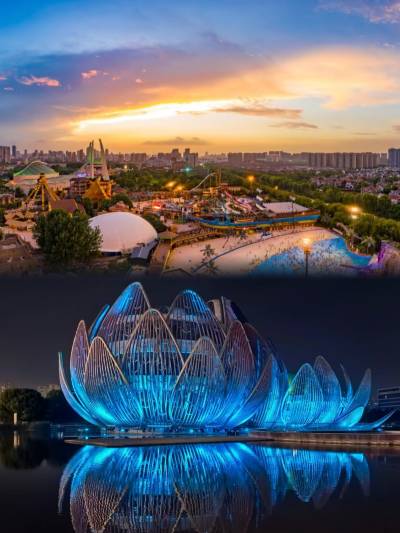
Yancheng Site.
Frequently Asked Questions
-
Is the Yancheng Site suitable for children and the elderly?
Yes, the Yancheng Site is generally suitable for families with children and elderly visitors. However, some attractions may have age or height restrictions, so it’s best to check in advance. The park features plenty of green spaces for children to explore, and the peaceful atmosphere is ideal for older visitors seeking a tranquil experience. -
Are there English signs and information available at the site?
While some signs and information at the Yancheng Site may be available in English, the majority is in Mandarin. If you’re not fluent in the language, consider hiring a local guide who can provide you with insightful commentary and help navigate the site. -
How much time should I plan for my visit?
A typical visit to the Yancheng Site can take anywhere from 2 to 4 hours, depending on your interests. If you wish to explore the historical areas, take a boat ride, and enjoy the park’s surroundings, plan for at least half a day. -
What is the best time to visit to avoid crowds?
Weekdays are generally less crowded than weekends, making them the ideal time for a visit. If you must go on a weekend, try to arrive early in the morning to enjoy a quieter experience. -
Is there an entrance fee, and what does it include?
Yes, there is an entrance fee to access the Yancheng Site. The standard ticket price is around ¥190, with an additional charge for optional boat rides. The fee covers entry to the main areas but note that some attractions within the site may require extra fees. -
What amenities are available at the site?
The Yancheng Site features basic amenities such as restrooms, information centers, and food stalls. However, dining options may be limited, so consider bringing snacks or planning to dine elsewhere after your visit. -
Are there any restrictions on what I can bring into the site?
Generally, you can bring personal items such as bags and cameras. However, large bags or outside food may be restricted, so it’s advisable to check the site’s specific regulations before your visit. -
What should I wear when visiting the Yancheng Site?
Comfortable clothing and sturdy footwear are recommended, as you’ll be walking around the park and exploring various areas. If you visit during the rainy season, don’t forget to bring an umbrella or raincoat.
Final Thoughts on Your Trip
As you reflect on your journey to the Yancheng Site, you’ll carry with you not just a glimpse into the rich tapestry of Chinese history, but a unique blend of tranquility and cultural insight. From the beautifully preserved Yangtze Delta-style water village to the lush greenery that envelops this national park, each corner of Yancheng invites you to slow down and appreciate the serene atmosphere, a welcome respite from the bustle of modern life.
While some attractions may have been closed or less accessible during your visit, the essence of Yancheng lies in its ability to evoke a sense of wonder and introspection. Whether you wandered through the historic ruins or enjoyed a peaceful boat ride on the river, you’ve experienced a slice of history that speaks to the heart of China.
So as you prepare to leave this captivating destination, remember that every journey is about the stories you create and the memories you forge. Embrace the allure of exploration, and let the echoes of Yancheng inspire your next adventure.